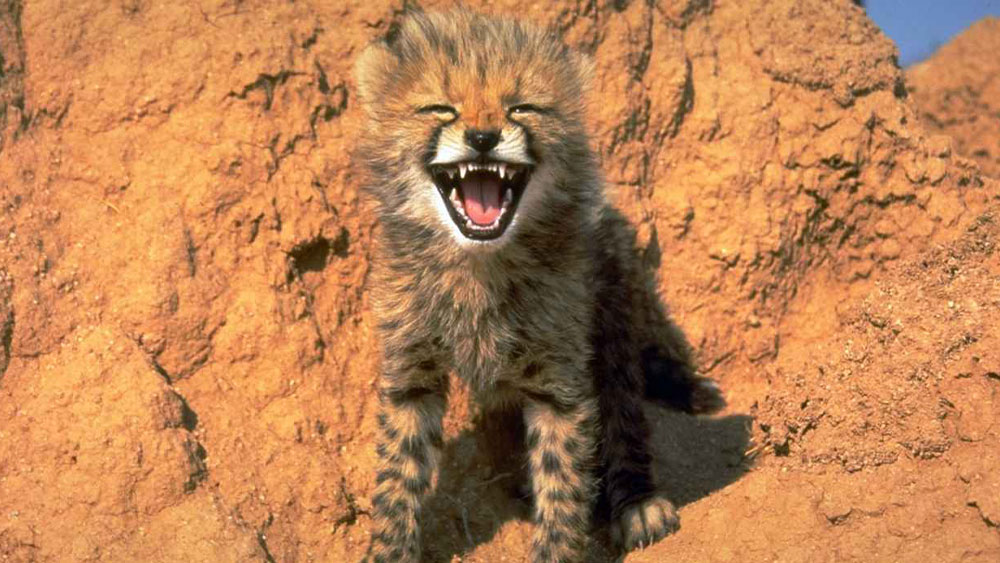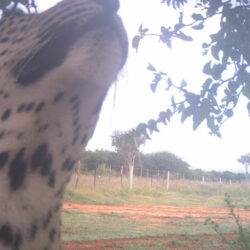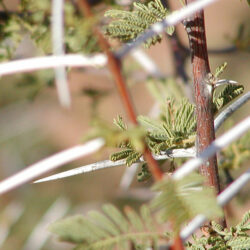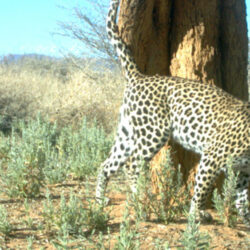The Sounds They Make Reveal Their Past
-

- by Brandy Morenko Campbell September 7, 2022

Article Summary of Early life experience and sex influence acoustic repertoire use in wild-born, but hand-reared, captive cheetahs (Acinonyx jubatus)
Authors:Hélène Bouchet, Alban Lemasson, Katie Collier, Laurie Marker, Anne Schmidt-Küntzel, Becky Johnston, and Martine Hausberger
Young cheetahs typically spend around 18 months with their mother and siblings learning how to hunt and how to be a cheetah during those important formative months. If their time together is reduced because of human-wildlife conflict or following confiscation from the illegal pet trade, orphans are often hand-reared in conservation centers. The age at which they were rescued can have lasting impacts on their social behaviors, future parental skills, mating behaviors, as well as their communicative behaviors.
Researchers from University of Rennes and CNRS, and CCF investigated the potential impact of maternal deprivation on the number and types of vocalizations in 12 hand-raised wild-born adult cheetahs with known ages at which they were raised by humans. Early reared animals were defined as those that were rescued between a few days old to 2 months of age, and late-reared animals were animals rescued as juveniles between 2 and 6 months of age. These two groups of animals were observed and recorded over several months with over 218 hours of recordings ultimately collected and analyzed. Cheetah sounds were screened for distinctive frequency, pulse, and temporal features.
Sixteen different types of vocalizations were identified in this study. Twelve were vocal and four were considered a non-vocal sound produced by forced airflow through the mouth or nose, like a snore or a blow in horses. This is nearly double the number of sounds previously described in captive cheetahs. The unique sounds they identified include the mew, growl, sneeze, meow, purr, snuff, hiss, hoot, stutter, trill, chortle, howl, bark, spit, scream, and hou. The hoot, hou, trill, chortle, and bark were new to researchers.
Single-Type Sounds
Repeating Single-Type Sounds
Multitype cheetah sounds.
Early reared individuals seemed to vocalize less than late-reared animals. Early reared females displayed a less varied repertoire of sounds than other individuals, and males, regardless of their early-life experience, had a greater diversity of calling patterns. Interestingly, there were large differences between individuals in their use of the vocal repertoire that appeared to be related to their gender and early-life maternal experience. Within the early-reared groups, the females used mews and growls while the males used meows and stutters more frequently. Early reared males purred more often than any other group. Late-reared individuals of both genders used meows in series whereas their early-reared counterparts never did.
Additional research is needed to better understand why some of these sounds are used and how an individual’s rearing history can shape communication patterns, but this groundbreaking research was the first to characterize and quantify vocalizations of individuals with known histories from birth. It also reiterates the importance of future cheetah vocal behavior studies to include living conditions and rearing histories in their data analysis in order to appropriately compare vocal behaviors across genders and life experiences.




